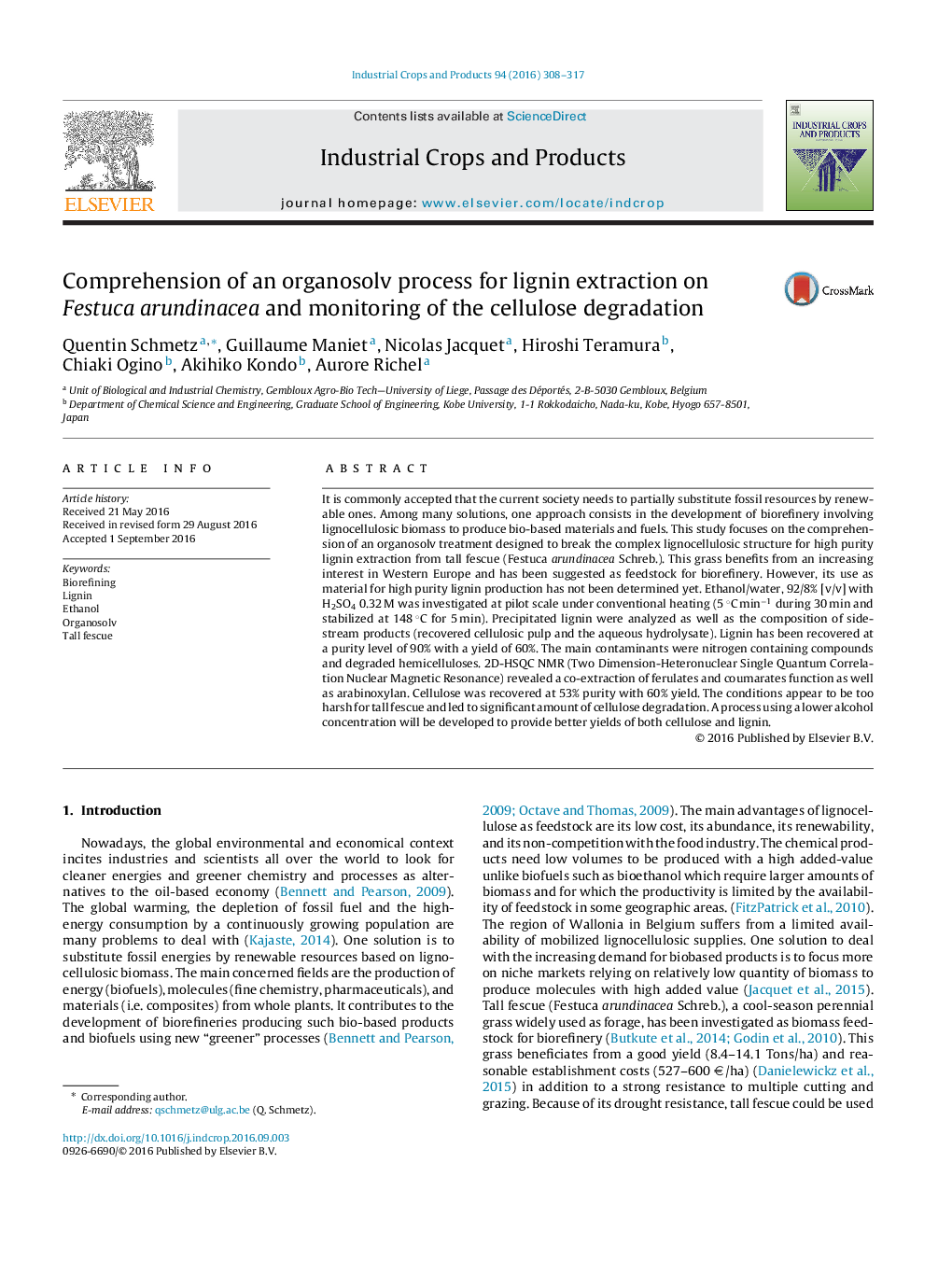| Article ID | Journal | Published Year | Pages | File Type |
|---|---|---|---|---|
| 6375535 | Industrial Crops and Products | 2016 | 10 Pages |
Abstract
It is commonly accepted that the current society needs to partially substitute fossil resources by renewable ones. Among many solutions, one approach consists in the development of biorefinery involving lignocellulosic biomass to produce bio-based materials and fuels. This study focuses on the comprehension of an organosolv treatment designed to break the complex lignocellulosic structure for high purity lignin extraction from tall fescue (Festuca arundinacea Schreb.). This grass benefits from an increasing interest in Western Europe and has been suggested as feedstock for biorefinery. However, its use as material for high purity lignin production has not been determined yet. Ethanol/water, 92/8% [v/v] with H2SO4 0.32 M was investigated at pilot scale under conventional heating (5 °C minâ1 during 30 min and stabilized at 148 °C for 5 min). Precipitated lignin were analyzed as well as the composition of side-stream products (recovered cellulosic pulp and the aqueous hydrolysate). Lignin has been recovered at a purity level of 90% with a yield of 60%. The main contaminants were nitrogen containing compounds and degraded hemicelluloses. 2D-HSQC NMR (Two Dimension-Heteronuclear Single Quantum Correlation Nuclear Magnetic Resonance) revealed a co-extraction of ferulates and coumarates function as well as arabinoxylan. Cellulose was recovered at 53% purity with 60% yield. The conditions appear to be too harsh for tall fescue and led to significant amount of cellulose degradation. A process using a lower alcohol concentration will be developed to provide better yields of both cellulose and lignin.
Related Topics
Life Sciences
Agricultural and Biological Sciences
Agronomy and Crop Science
Authors
Quentin Schmetz, Guillaume Maniet, Nicolas Jacquet, Hiroshi Teramura, Chiaki Ogino, Akihiko Kondo, Aurore Richel,
